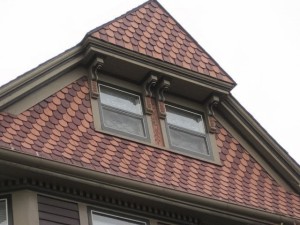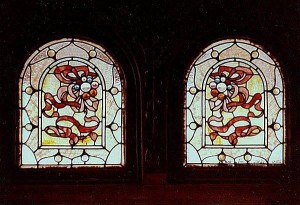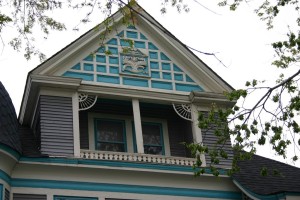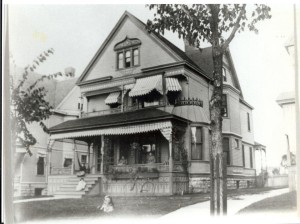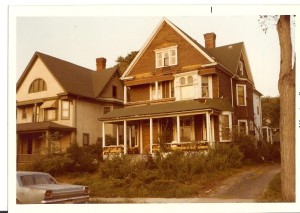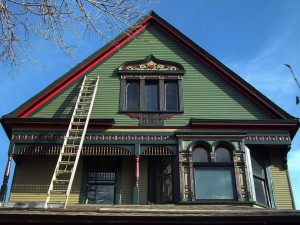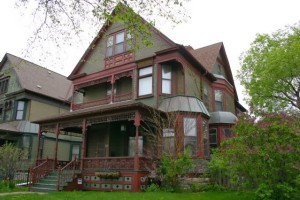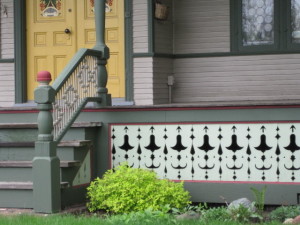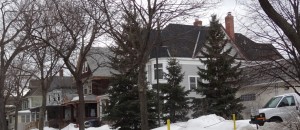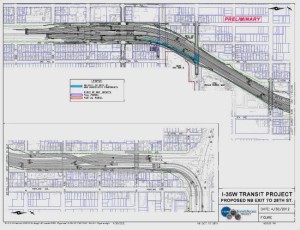
Welcome to the
Healy Project
Join us on Facebook
Send us an Email
Healy Block Residential Historic District – an Introduction
The story of the Healy Block revolves around Theron Potter “T. P.” Healy, born in Round Hill, Nova Scotia, in 1844, died in Minneapolis in 1906. Theron was born into a family of farmers and carpenters. His great-grandfather Ebenezer was one of the New England “Planters” who came to
Nova Scotia in 1762 after the expulsion of the Acadians in 1755. His grandfather was a ship’s captain; his father was a farmer. His brothers were carpenters who operated the Healy Woodworks Company in Round Hill.

Young Theron Potter Healy
Theron married up. His wife Mary Anne Jefferson was descended from Thomas Jefferson’s brother Stephen. The Jefferson family had been in Round Hill for a century, and Mary Anne’s father had extensive land holdings. The Healys were Baptists, while the Jeffersons were Anglicans. In their first house, Theron’s occupation is listed as “farmer and trader.” In 1872, Theron and Mary Anne headed to the capital of Halifax with three small children. In Halifax, Theron with his partner John Whitman worked as “commission merchants.” He owned three schooners, two of which he had built, to move food up and down the Atlantic Coast. The frequency of his moves in Halifax suggests that he was building houses as well.

Healy’s home in Round Hill, Nova Scotia
One of Healy’s ships sank in a storm in 1883. Family lore says Mary Anne did not like the cold, wet climate. Healy took the insurance money, sold one of his remaining schooners, and headed out with his older brother Anderson Healy, his wife Mary Anne, and the eight children to Bismarck, the Dakota Territories. The fraternal partnership consisted of Anderson the carpenter and Theron the businessman. They built tenements, a poor farm, a jail in a neighboring county, and in the winter of 1886, an Indian School in Fort Peck, Montana. In April of 1886, Theron, Mary Ann, and now nine children moved to Minneapolis. They rented a row house on Clinton
Avenue South between 22nd Street and 24th Street, immediately behind where the Hennepin County Historical Society sits today.
Theron was forty-two years old when he began to build in Minneapolis. Within a decade, T. P. Healy would become the premiere master builder in Minneapolis history. The two-block historic district contains fourteen Queen Anne houses that Healy designed and built, as well as three horse barns, built between 1886 and 1898. As a master builder, Healy both designed and built the houses in this district. In Healy’s career after 1893, he would build the designs of the most prominent Minneapolis architects in the neighborhoods of Lowry Hill, Whittier, Loring Park, and Loring Heights.

1912 Sanborn fire insurance map of the Healy block

3100 block circa 1932
The block was drastically changed in 1959-60 when fifteen Healy-designed houses were demolished for Interstate-35W, including eight on the 3100 block of Second Avenue South. The larger district once included thirty-six Healy houses and thirteen horse barns. The horse barns remind us that horses, wagons, and carriages were fundamental to the transportation system, especially for a builder. The Healy Block was built on farmland at the end of the first streetcar line coming out of downtown on Fourth Avenue South.

The Healy block in 1959

35W construction begins
Healy has been nicknamed the “King of the Queen Anne.” He was prolific, building over 200 buildings between 1886 and 1906. His houses were filled with sumptuous woodwork, elegant hardware, jeweled stained glass, wallpapers, and fabrics. T. P. Healy also created a neighborhood of prominent businessmen and women active in society. Many of the names do not resonate today, but the jeweler J. B. Hudson and the retailer Richard Sears have names that we still recognize. T. P. Healy was their peer–an Episcopalian, a Mason, and during his time in Halifax, a Knights Templar.
The District today is defined by its proximity to Interstate-35W. Interestingly, the freeway construction exposed the houses to public view, and they can now be seen along 35W beside the 31st Street exit. The freeway demolition process did not cut through the middle of the Southside
African-American community as happened to St Paul’s Rondo eighborhood with I-94. Interstate-35W skirted the Southside African-American community to create a race barrier on the Southside of Minneapolis. The Healy Block remains the most intact and concentrated example of
Queen Anne architecture constructed by a single builder in Nineteenth century Minneapolis.
The Historic District has housed a resilient and resourceful collection of residents since the 1960s who have restored, protected, and promoted the Healy legacy. The modern process of recognition began with Norm Lindberg and Ron Domanski with their purchase of the Bennett-
McBride House. In 1976, the house was featured as the Designers Showcase. In 1977, with the help of Charles Nelson, architectural historian with the Minnesota Historical Society, the house was placed on the National Register of Historic Places. However, in the application for the
National Register, the house is attributed to the architect, “John Healey.”

The Healy block circa 1980
In 1978, T. P. Healy was rediscovered by Anders Christensen as part of the research for a house tour in the Lowry Hill East neighborhood. The article in Twin Cities Magazine by Trilby Busch Christensen in 1981 told the Healy story in an elegant and comprehensive way, accompanied by beautiful pictures in a glossy format.
On the Healy Block, neighbors formed the Healy Block Club. Carolyn MacDonald and Marjory Holly began advocating for historical designation. Pete Holly started reproducing countless details that had been removed from the houses over the years.
The Healy Block was designated as a Minneapolis Historic District in 1989. Architectural historian Paul Larson did the survey work. Politically, Eighth Ward council member Sharon Sayles-Belton advocated for the block. Sayles-Belton graduated from Minneapolis Central High. She would become the 45th Mayor of Minneapolis in 1994, the first woman mayor and the first
African-American mayor. The Healy Block went on the National Register of Historic Places in April of 1993. The single most powerful force behind both designations was Marjory Holly. David Piehl purchased the Hudson house, 3127 Second Avenue South, in 1992, and over the last three decades, he has been the principal political advocate for the block.
Footnote 1: We have chosen to rename nearly all of the houses on the block. The original names were given during the nomination process for the National Register of Historic Places. The house was typically named after the first or the most prominent man who lived in the house. We have
chosen to include the names of the wives. Beyond the simple sexism of the previous choice, the wives would have been responsible for running a household that often included children, relatives, boarders, and servants. The men worked in the world to make the money to afford the house; the women both managed the house and worked in it. They deserve to be recognized. In two cases—the George F. Bates House and the Healy-Rae House—the house got named for short-term tenants. We have renamed the houses after owners.
The information about the early owners is based on the research that Ezra Gray undertook in 2017 for the Healy Project. Information about the “modern” owners from the 1960s on came from newspaper stories and the memories of Madeline Douglass, Carolyn MacDonald, Margery Holly, Wayne Tinberg, David Piehl, Robert-Jan Quene, and Brian Finstad.
Footnote 2: When I use the capitalized “District,” I am referring to the two block historic district of the east side of Second Avenue South and the west side of Third Avenue South between 31st Street and 32nd Street. When I use the lower case “district,” I am referring to the thirty-six Healy
designed and built houses including the fourteen in the District, the fifteen torn down for the freeway, the six on the east side of the 3300 block of Second Avenue South, and 3205 Second Avenue South, torn down in the 1990s.
Because of a family emergency, we regret that we have had to cancel this tour. Thanks for your interest. Watch the blog for other upcoming Healy Project events.
Great news for Healy’s most famous Queen Anne houses: On Monday evening, March 23rd, at a meeting held by Hennepin County and the City of Minneapolis with residents of the Healy Block Historic District, the proposed sound wall was defeated by unanimous vote among those residents present. In addition, a new proposed design for the I-35W expansion was presented and approved. Monday’s win for the Block is an inspiration for the preservation community: an example of how historic district residents can triumph during a long and challenging political process.
Plans for expanding and redesigning I-35W at the 31st Street exit have been in the works for a long time. Since the early 1990s, various plans have come and gone, representing serious threats to the Healy Block. In their current manifestation, expansion plans were introduced more than four years ago. Negotiation and discussion between the various government entities (federal, state, county and local) and the Block residents have been going on since then. (See post Threats to Healy Houses Renewed) Over a year ago Block representatives met with MNDOT commissioner Charles Zelle to work out some of the issues with the design. The new design and the nixing of the sound wall represent a significant win for livability of the residents on the Block and the future preservation of these historic houses.
David Piehl, who owns and lives in the J.B Hudson House on the Block, explains why eliminating the sound wall from the expansion plans is important: “A wall would be ugly, and the snow storage requirements for the freeway would mean the wall would be 10 feet closer to our homes than it currently is, in addition to being 20 feet high on top of the already-high embankment. Furthermore, the improvement in noise levels was projected to be around 5 decibels, which is not nearly significant enough for us to want to make the other sacrifices the wall would require.”
After the vote on the sound wall, discussion turned to the design of the off-ramp. Residents previously selected a design with a single-lane ramp, separated from Second Avenue by a median. However, the Federal Highway Administration vetoed it as “fatally flawed” due to lack of “storage.” That left another option which was very similar, but had a two-lane ramp.
At the meeting Block residents David Piehl, Ioannis Nompelis, and Pete Holly fought hard to keep the pavement and traffic as far from the historic houses as feasible. Residents recognize that Second Avenue on the 3000-3100 blocks serves three purposes–as a residential street, an off-ramp, and frontage road.
On Monday project organizers presented a modified design that has the ramp starting as single lane, then widening to two. They also widened the median separating Second Avenue from the ramp to 12 feet by taking a portion of the embankment. As Piehl reports, Block residents “are OK with this because it moves green space closer to our homes and the ramp further away. We wanted the median to be wide enough to be planted, so we can plant a visual screen between Second and the ramp, and we got that. A visual screen will also be re-planted on the embankment. The proposed median runs all the way to 31st Street. Second Avenue becomes a single lane with parking, but entirely separate from the ramp south of 31st. Even better, Second at 31st will be ‘right turn only’ due to adding 20 feet of boulevard space in front of the two homes on the 3000 block—which again moves traffic away from those homes, improving livability. The ‘right turn only’ lane reduces the appeal of 2nd Ave as a ‘frontage road’. The upshot is that Second Avenue will be a single lane residential street separated from the ramp by a 12-foot-wide, planted median.”
The miracle is that after four years of negotiating and fighting with the various entities involved in the I-35W expansion, residents of the Healy Block finally got nearly everything they asked for, short of moving the ramp. As Piehl says, “It is amazing to think that they started with bringing the freeway 30 feet closer, and a massive retaining wall–and we got them to a place where the plan is an improvement over what currently exists!”
This is a truly remarkable win for preservation in Minneapolis. Thanks go to a talented city planner, Jeni Hager, who diligently designed, re-designed, and re-designed again to ensure that the current proposal satisfied residents’ aesthetic and livability concerns as well as state and federal requirements. Many thanks also to supportive City Council members Elizabeth Glidden and Alondra Cano for their leadership. And finally, thanks and congratulations to David Piehl, Ioannis Nompelis, Pete Holly, John Cuningham (who worked for moving the ramp) and other Block residents who persevered and made it happen.
and did!
T.B.
“Merlin, if you don’t stop whining, I’m going to take Gwen’s sword and beat you to death with it,” said Arthur, evenly.
“It’s plastic.”
“So it will take me a long time. I’m still game.”
― FayJay, The Student Prince
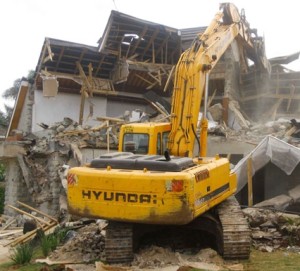 |
| The Orth House later this year? |
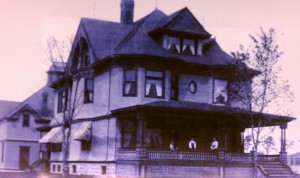 |
| The Orth family on the porch of their house (2320 Colfax S.), 1890s. |
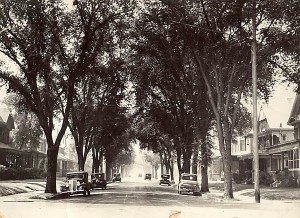
| 1936 photo of Second Ave S. from the 31st Steet intersection |
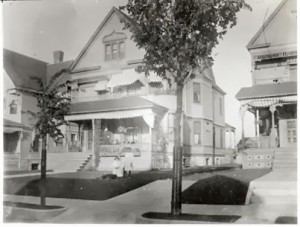 |
| The Hudson House in the days before people sitting on the porch didn’t see a freeway across the street. |
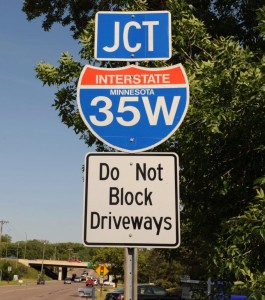 |
| Do not pave up to historic houses. |
